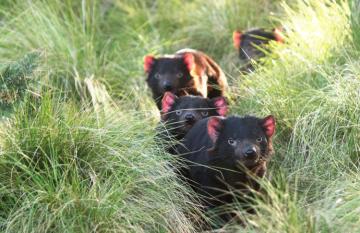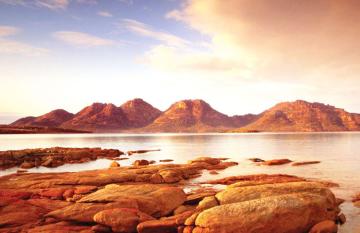
From Ice Age inhabitants to weird and wonderful creatures, discover more about Cradle Mountain with these intriguing facts.
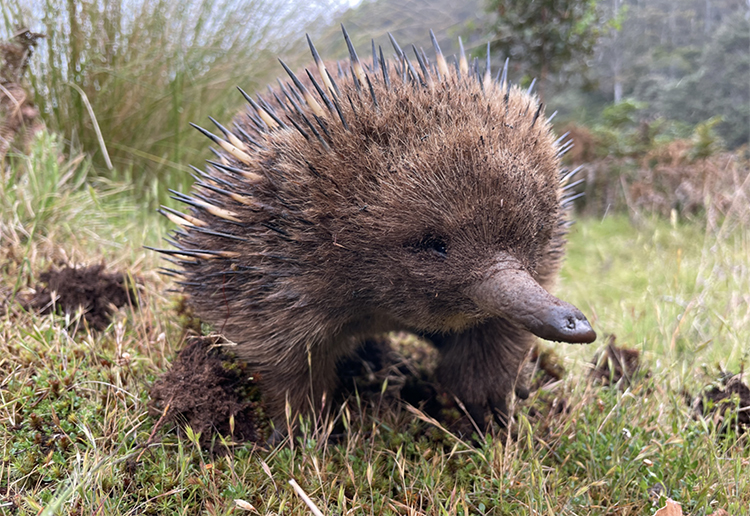
Contents
- 1. Cradle Mountain could’ve been called “Rocker Box Mountain”
- 2. Cradle Mountain is home to the world’s biggest little hunter
- 3. People have been in Cradle Mountain for a looooooooong time
- 4. Cradle Mountain is protected by national and international law
- 5. Home to Australia’s deepest lake and Tasmania’s highest peak
- 6. Cradle Mountain was covered in ice nearly as high as Mt. Everest
- 7. You can’t drive or book a hotel inside Cradle Mountain
- 8. Creature Comforts and Creative Pursuits
Cradle Mountain is a fascinating place and a major highlight on any Tasmania travel itinerary. But did you know that there’s more to Cradle Mountain’s intrigue than “just” its stunning, world-class landscapes?
This region has a long history and some intriguing quirks. If you’re interested in knowing a bit more about one of Tasmania’s top travel destinations, read on for eight fun facts about Cradle Mountain that may enlighten or inspire you!
1. Cradle Mountain could’ve been called “Rocker Box Mountain”
For long periods of the 19th and early 20th centuries, Cradle Mountain was home to a lot of gold-mining activity. During this time, Cradle Mountain received its English-language name when, in 1827, European land surveyor Joseph Fossey thought it resembled a gold-mining implement known as a “cradle”, and recorded its name as such in early records.
“Cradles” are gold-mining devices used to separate rock, gravel, sand, and other materials from gold dust. These are made of several boxes and sieves (or carpets) of different sizes, each laid on top of the other, which sort through the coarser materials and allow miners to extract fine gold and gold dust. These boxes sit at a slight angle, meaning they can be rocked side to side by gravity. This is what gives the mining implement its other, more common name: the “Rocker Box”.
2. Cradle Mountain is home to the world’s biggest little hunter
Cradle Mountain is a region of varied and vast landscapes, with different climatic conditions and diverse environments. Therefore, it is home to a huge range of wildlife, including plenty of interesting native creatures.
Most famous of all is the Tasmanian Devil, which is the largest species of carnivorous marsupial left in the world. This taxonomic group used to be much larger, spreading all across Australia, but only a few survivors remain. Luckily, however, visitors to Cradle Mountain don’t have to go too far to see another one – because the world’s second-largest carnivorous marsupial, the Spotted-Tail Quoll, also calls Cradle Mountain home!
You can see both of these local creatures on any visit to Cradle Mountain, no matter what time of year. The best way to get up close and personal with the Tasmanian Devil – and to learn about ongoing conservation efforts to keep them around – is at Devils @ Cradle. This immersive conservation and visitor centre offers everything from behind-the-scenes tours and guided feedings to kids games and Tassie Devil-themed merchandise.
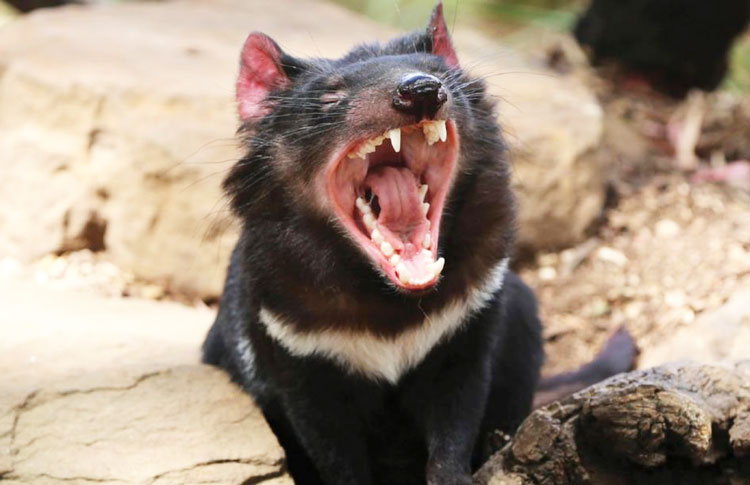
3. People have been in Cradle Mountain for a looooooooong time
Aboriginal peoples have a deep and rich connection to the Tasmanian landscape. Much of the land encompassing what is now the Tasmanian Wilderness World Heritage Area – of which Cradle Mountain is a part – has been inhabited, modified, or used by indigenous Australian Aboriginal groups for over 40,000 years!
The area around Cradle Mountain itself lies on the fringes of the traditional Territories of the Lairmairrener (or “Big River”) tribe and the Northern Tasmanian Aboriginal tribes. Archaeological evidence from cave sites across the region suggests that people have been present here for more than 20,000 years, with much clearer evidence of human activity intensifying from the past 10,000 years.
In general, it seems that people didn’t live here permanently, and only inhabited the harsher alpine areas around Cradle Mountain in summer months. Unfortunately, since the arrival of European settlers, much of Tasmania’s Aboriginal heritage has been lost.
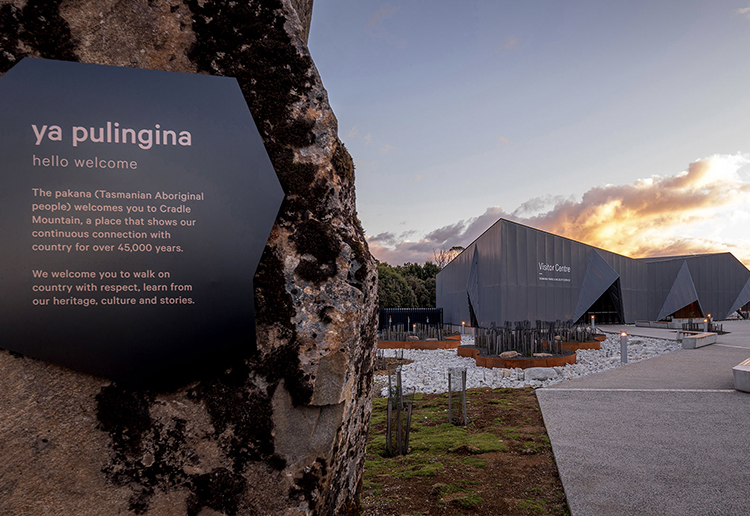
4. Cradle Mountain is protected by national and international law
A wilderness-lover’s paradise, nearly half of Tasmania’s area is protected nature reserves and national parks.
The area surrounding Cradle Mountain encompasses one of the most popular and spectacular of these national parks: the Cradle Mountain-Lake St. Clair National Park. The first campaigns to make this special region a national park were started by Kate Cowle and Gustav Weindorfer in 1910, and after being first a scenic reserve (1922) and wildlife reserve (1927), it eventually gained its nationally protected National Park status in 1947. Things then went global: Cradle Mountain has been part of the UNESCO-protected Tasmanian Wilderness World Heritage Site since its designation by the United Nations in 1982.
5. Home to Australia’s deepest lake and Tasmania’s highest peak
The Cradle Mountain region is best known for the iconic mountain peak that gives the region its name. However, Cradle Mountain itself (at 5,069 ft, or 1,545 m) may be Tasmania’s sixth-highest mountain – but it’s actually not even the highest peak inside the Cradle Mountain-Lake St. Clair National Park! That award goes to Mt. Ossa (1,617 m), the highest mountain in Tasmania, which is also within the national park.
Furthermore, at the main southern entrance to the national park, you get a sense of just how much variation and diversity this landscape covers: Lake St. Clair is the deepest lake in Australia, with its deepest sections approximately 215 m (700 ft) beneath the surface.
6. Cradle Mountain was covered in ice nearly as high as Mt. Everest
Geologists have found that Cradle Mountain has gone through three different stages of glaciation over the past 2 million years, many of Cradle Mountain’s majestic landscapes were carved by ice.
Towards the end of the last Ice Age, roughly 20,000-12,000 years ago – when people were already living in the area – Cradle Mountain was covered by a gigantic ice cap measuring 6 kilometres deep! Glaciers at the fringes of this ice cap advanced and retreated over the years, gradually carving out the valleys, gulleys, ridges, and remarkable geological landscapes from the ancient rock – including the incredible underwater labyrinths of Lake St. Clair.
After the ice melted, these remarkable formations were revealed, and the valleys and gullies were filled with water to continue creating the well-known landscapes of rivers and lakes throughout Cradle Mountain-Lake St Clair National Park.
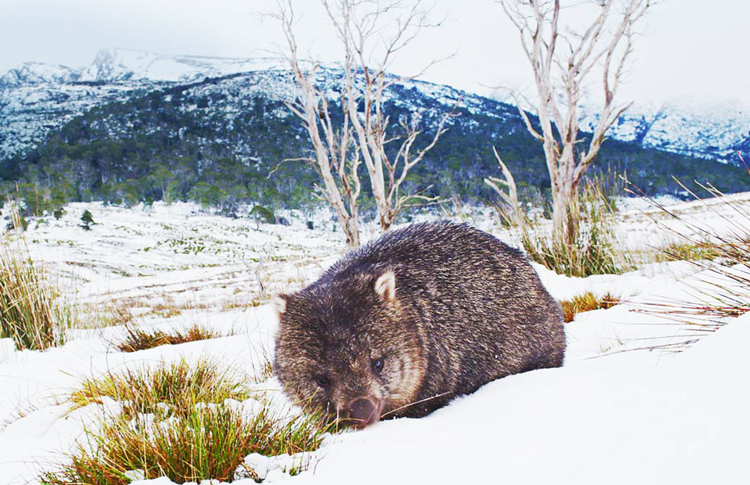
7. You can’t drive or book a hotel inside Cradle Mountain
Well, you can… but technically not inside Cradle Mountain National Park.
Cradle Mountain has been used for a lot of things over the years: from controlled burning of landscapes by indigenous Aborigines to encourage animals eating the young shoots of plants, to Europeans grazing imported cattle and sheep here in the early 1900s. For a lot of Cradle Mountain’s colonial history, it was a booming centre of the fur trade inhabited by “trappers” and fur traders (one of whom, Bert Nichols, blazed the now-famous Overland Track, Australia’s premier alpine walking trail, in 1931).
Today, however, it is a protected area. Commercial operations and accommodation (besides hiking huts) can only be located outside the park entrance, and even driving through the national park is forbidden. Instead, visitors can take the shuttle bus (included in the park entry price) to various points of interest.
8. Creature Comforts and Creative Pursuits
Although best known for its magnificent landscapes and beautiful wilderness, Cradle Mountain is no stranger to creature comforts and creative pursuits.
Adjacent to the main national park entrance and Cradle Mountain Visitor Centre you can find a thriving village offering different accommodation and entertainment options. There are several day spas and wilderness retreats, canyoning, kayaking and adventure tour operators, as well as fine-dining restaurants, elegant hotels, helicopter tours, and an art gallery dedicated to supporting local artists. Find out more about all the things to do at Cradle Mountain in our dedicated blog post on Things to do in Cradle Mountain.
Booking a trip to Cradle Mountain
Intrigued? Whether you want a quiet getaway or an active escape, Cradle Mountain obviously has a lot more going for it than just learning fun facts – and a lot more for visitors to discover and enjoy.
To get an idea of what else to expect from a trip to Cradle Mountain, check out First Light Travel’s blog page dedicated to all things Tasmania. You can also find a number of self-drive Tasmania tour itineraries taking in Cradle Mountain; or, reach out to FLT directly and ask about arranging your own personalised itinerary!
Recent Posts
Blog Categories
Blog archives
- March 2025 (1)
- November 2024 (1)
- October 2024 (1)
- September 2024 (8)
- June 2024 (4)
- May 2024 (2)
- April 2024 (2)
- March 2024 (13)
- February 2024 (3)
- January 2024 (5)
- December 2023 (6)
- November 2023 (4)
- October 2023 (11)
- September 2023 (2)
- August 2023 (6)
- July 2023 (2)
- June 2023 (17)
- May 2023 (3)
- April 2023 (5)
- March 2023 (8)
- February 2023 (9)
- January 2023 (12)
- December 2022 (9)
- November 2022 (12)
- October 2022 (12)
- September 2022 (12)
- August 2022 (6)
- July 2022 (9)
- June 2022 (7)
- May 2022 (3)
- April 2022 (4)
- March 2022 (6)
- February 2022 (1)
- January 2022 (4)
- December 2021 (2)
- November 2021 (3)
- October 2021 (1)
- September 2021 (4)
- August 2021 (10)
- July 2021 (13)
- June 2021 (6)
- April 2021 (2)
- March 2021 (2)
- February 2021 (1)
- January 2021 (1)
- December 2020 (2)
- November 2020 (3)
- October 2020 (2)
- September 2020 (1)
- August 2020 (1)
- July 2020 (1)
- June 2020 (1)
- May 2020 (1)
- March 2020 (1)
- February 2020 (2)
- January 2020 (4)
- December 2019 (2)
- November 2019 (1)
- October 2019 (1)
- September 2019 (5)
- August 2019 (1)
- July 2019 (5)
- June 2019 (1)
- May 2019 (1)
- April 2019 (1)
- March 2019 (1)
- February 2019 (1)
- January 2019 (1)
- December 2018 (1)
- October 2018 (1)
- May 2018 (1)
- February 2018 (1)
- December 2017 (1)
- October 2017 (1)
- June 2017 (1)
- May 2017 (1)
- February 2017 (1)
- January 2017 (1)
- September 2016 (1)
- August 2016 (2)
- July 2016 (1)
- June 2016 (1)
- May 2016 (1)
- April 2016 (1)
- December 2015 (1)




